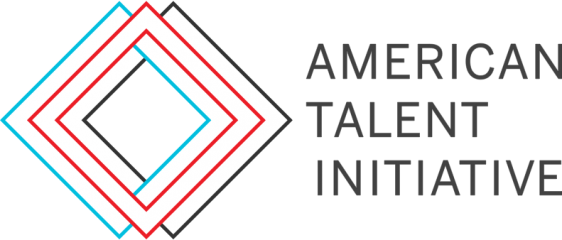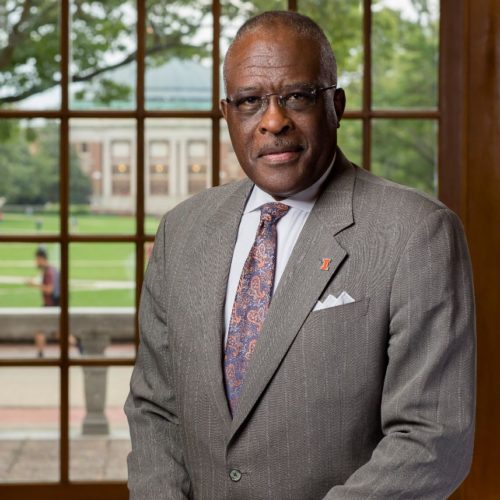Presidential Perspectives: Eric Spina, University of Dayton
April 19, 2018
Reading Time: 4 minutes

The University of Dayton aims to increase Pell-eligible student enrollment in each entering cohort from 14% in Fall 2017 to 20% by Fall 2023. We sat down with President Eric Spina as he reflected on his involvement with the American Talent Initiative, how UD hopes to achieve its goals, and what he’s learned about access for low- and moderate-income students over 30 years in higher education.
"There are no technology fees, no student fees, and the net tuition that families pay here will be guaranteed across four years. This changes the conversation with first-generation families especially. The price is understood—then you can move on to talking about the quality of the institution and the value of the education.”
– President Eric Spina on the benefits of UD’s fixed net tuition guarantee for first-generation and moderate-income students and their families.
Q: Why did you personally want to be involved in the American Talent Initiative?
President Spina: For me personally, as an individual who happens to be president, I’ve seen how important it is. When individuals who might not otherwise have access to a high-quality institution are able to attend, it can change the arc of a family’s life. It’s marvelous for the individual, but it’s also great for the community. We talk a lot about the importance of diversity in an academic environment for optimal learning, so let’s remember that socioeconomic diversity is an important element, too. From the perspective of a citizen of the country and the world, it’s critical to our society to make certain that individuals who may be coming from lower-income backgrounds and first-generation families, that they have the same opportunities. After having been in higher education for 30 years, joining ATI was a no-brainer.
Q: Why, in your view, has the ATI sector flat-lined in recent years when it comes to enrolling more Pell-eligible students?
President Spina: There are two big problems, from my perspective. Especially since 2008, the drive has been to really ameliorate fiscal challenges, at publics and privates, as publics have seen shrinking state support and as privates have seen discount rates increasing. It’s easy to say you believe in the power of higher education for moderate- and low-income families, but to then instead prioritize a better financial bottom line. But this has a negative impact on society and over time, I think it also really hurts the quality of an institution.
And hidden in the financial issues is a hyper-focus on rankings. ACT and SAT credentials are a big factor in US News and World Report’s rankings, but as we really look for the students who can most benefit from support of institutions of higher education, we sometimes need to look beyond those measures. You need to look at innate talent, how a student has been able to leverage that in under-resourced schools and communities, and the growth of an individual that isn’t always reflected in test scores. Some of the pressure is self-induced and some is external, but what we as a sector have forgotten is the key role that higher education has played in the history of this country and in upward mobility.
Q: How is the American Talent Initiative going to move the needle on socioeconomic diversity on campus? What makes this initiative different?
President Spina: When you combine all these smart, creative presidents and administrators and put that next to the support of Bloomberg, Aspen, and Ithaka S+R, like at the Presidential Summit, that’s a pretty powerful combination. I’ve never been to a meeting where Princeton, Caltech, Dayton, Bard, and so many others—where everyone is there, and we are actually using the same language to talk about the same problem. We all believe in the same things, and we’re going to create change in our different ways and the impact is going to be different. But the fact that there were so many powerful presidents in that room and that they all found time to come to New York and be together for a day, that shows the level and depth of commitment to these issues. In my 30 years of working in higher ed, I haven’t seen people across the full breadth of the spectrum, from small liberal arts colleges to large state-funded institutions to the Ivy League, all in the same place. We were all at the same table, and I think that makes a difference.
Q: Name three specific things Dayton is doing that you think will make the biggest difference in providing opportunity to talented low-income students.
President Spina: First is our fixed net-price tuition program. Tuition changes are not a huge issue for Pell-eligible students and the lowest-income families, but as you move up the income scale, they can be a huge challenge for middle-class families that, over time, have been squeezed out of their institution of choice as they can’t absorb the additional four or six percent tuition cost or the additional fees. We’ve been as transparent as possible and eliminated really every price except for one: tuition, which is separate from room and board. There are no technology fees, no student fees, and the net tuition that families pay here will be guaranteed across four years. This changes the conversation with first-generation families especially. The price is understood—then you can move on to talking about the quality of the institution and the value of the education. This has led to higher graduation rates and lower borrowing rates and I think it’s huge for the moderate-income families.

The second thing I’ll point out is the UD Sinclair Academy. Students are admitted to UD and
Sinclair, a high-quality community college, at the same time. They’re told up front what their degree options are and what classes they can take at Sinclair versus University of Dayton. They know everything up front: their financial aid package across four years, net tuition, they get their UD ID and their Sinclair ID, their UD advisor and their Sinclair advisor. They have access to faculty, gyms, and the athletic events. And they’re welcome on both campuses. These students are told: You are members of the University of Dayton today; even though they might not take classes here for two years. And about 35 percent of the Sinclair Academy students are Pell-eligible, so it’s appealing to the kids who we want to get on campus.
And then UD’s Flyer Promise Program, a scholarship focused on students whose families have combined incomes of $75,000 or less, though in truth our first class of 42 students had an average family income of $33,000-34,000. Some of the assistance is financed by self-help through work and loans, but everything else is taken care of by the institution, and. We partner with a few high schools to identify students – three schools in the first year, and three additional schools in the next year of the program. These are kids who really never thought about going to the University of Dayton, and this program is perhaps the most gratifying thing I’ve ever experienced in my 30 years in higher ed.




